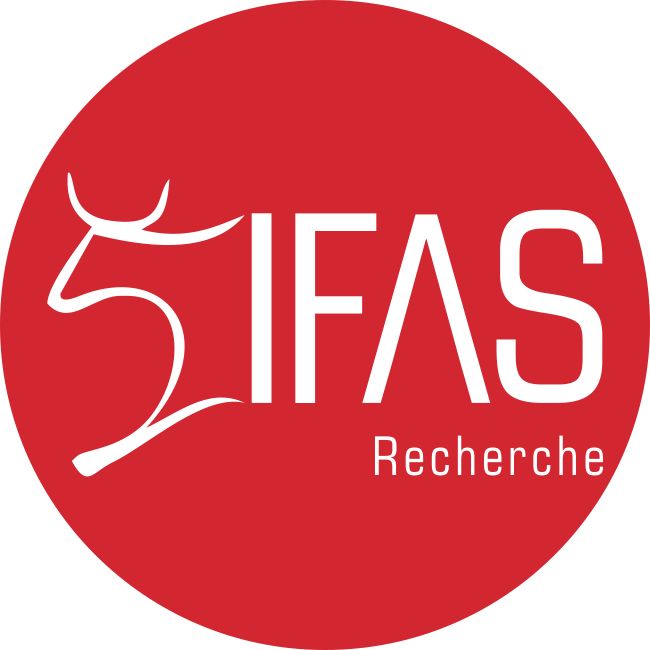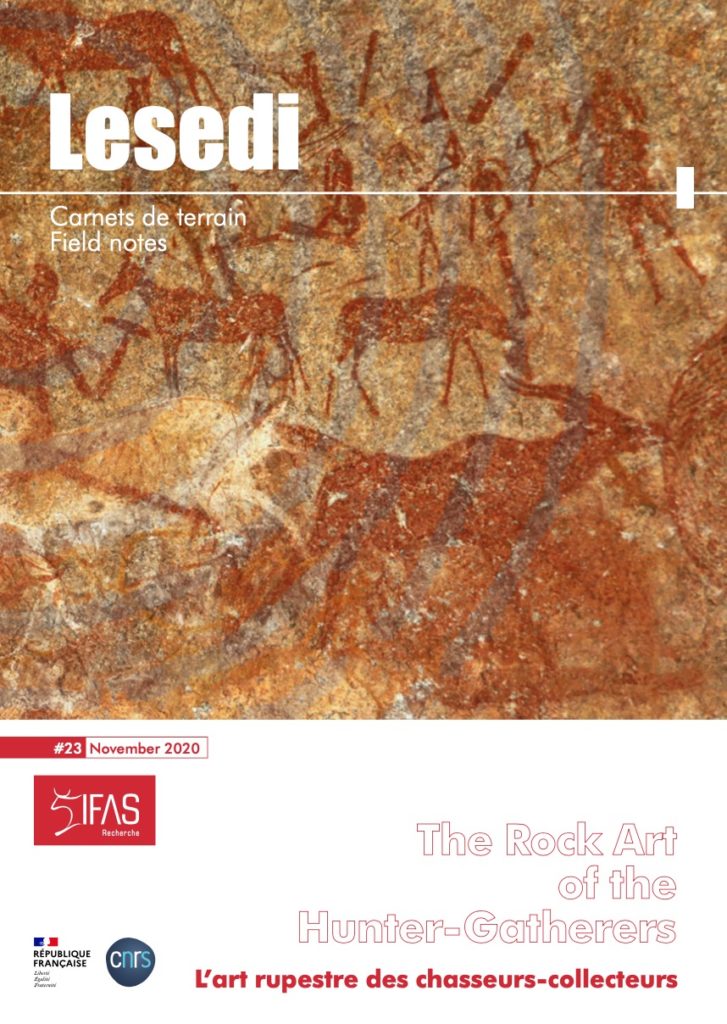Lesedi #23 – November 2020
Lesedi. Field notes #23
Lesedi, the online journal of IFAS-Research, is launching a new special issue of 80 pages focusing on rock art in southern Africa (“The Rock Art of the Hunter-Gatherers”). It contains 14 articles written by senior researchers, post-doctoral researchers and PhD students, presenting ongoing research, new fieldworks and collaborative projects in southern Africa, with a focus on Zimbabwe.
Covering a multitude of subjects (iconographic techniques, stylistics, lithic industries, archaeozoology, site conservation and heritage enhancement, etc.), this issue testifies to the multidisciplinary dimension of rock art studies.
Lesedi #23 was edited by Léa Jobard , Carole Dudognon and Camille Bourdier, all affiliated to TRACES Centre (UMR 5608 – Toulouse University) and welcomed on a regular basis by IFAS-Research in Johannesburg.
“After a century and a half of research, Southern African rock art is today built up on remarkable archaeological materials that make it possible to conceive, in the long term, the history of the hunter-gatherers who, for a long time, have been deprived of it. While the artistic testimonies of contemporary groups have drawn researchers’ attention at the very time when these populations were disappearing (Ego, 2000), the ethnographic and linguistic stories of the latest artists have tried to give meaning again to these works (Bleek, 1874, 1932; Orpen, 1874). Considered for a long time as the expression of the recent history of San populations, these artistic productions offer a visual quality that was lauded as early as the 19th century. They have been reproduced on the occasion of many redrawing campaigns, some of which have initiated parallels with European prehistory (Breuil, 1948).”
Table of contents
The Rock Art of the Hunter-Gatherers of Southern Africa/L’art rupestre des chasseurs-collecteurs d’Afrique australe
Coordinated by Léa Jobard, Carole Dudognon & Camille Bourdier
05| Introduction: The Rock Art of the Hunter-Gatherers of Southern Africa
Léa Jobard, Carole Dudognon & Camille Bourdier
09| Introduction : L’art rupestre des chasseurs-collecteurs d’Afrique australe
Léa Jobard, Carole Dudognon & Camille Bourdier
13| Approche interdisciplinaire de la paroi ornée. Pomongwe Cave et le programme MATOBART
Camille Bourdier, Carole Dudognon, Millena Frouin, Ancila Nhamo, Todini Runganga & Stéphanie Touron
19| Les sous-sols de l’art rupestre à l’abri Pomongwe (Matobo, Zimbabwe)
Guillaume Porraz, Precious Chiwara, Magnus M. Haaland, Joseph Matembo, Thubelile Mnkandla, Kelvin Machiwenyika, Todini Runganga, Chantal Tribolo, Aurore Val & Camille Bourdier
23| Diversity in Late Stone Age Art in Zimbabwe. An Elemental and Mineralogical Study of Pigments (Ochre) from Pomongwe Cave, Matobo Hills, Western Zimbabwe
Jonathan Nhunzvi, Ancila Nhamo, Laure Dayet, Stéphanie Touron & Millena Frouin
27| Silozwane, étude d’un palimpseste rupestre des Matobo
Carole Dudognon
33| Rock Art Conservation: Floor Stabilisation at Nswatugi Rock Art Site, Matobo Hills Cultural Landscape
Senzeni Khumalo, Charity Nyathi, Kelvin Machiwenyika & Todini Runganga
36| Matobo Rock Art in its Landscape. Understanding Role(s) of Rock Art in Later Stone Age Foragers Territoriality
Léa Jobard
42|The Diversity of the Common. The Significance of Spatial Motif Variation in Studying Cultural Variability using Rock Art in Zimbabwe
Ancila Nhamo
48| Phytanthropes. Human-Plant Conflations in the Rock Art of Zimbabwe
Stephen van den Heever
Crossed views from Southern Africa
53| Matières colorantes ferrugineuses, pigments de l’art rupestre et comportements des populations Later Stone Age à Leopard Cave (Erongo, Namibie)
Guilhem Mauran
60| Rock Art in Mozambique: Hunter-Gatherers’ Space, Symbolism, and Tools
Décio Muianga
64| Le contexte performatif de l’art rupestre San
David Witelson
69| Dateless substance. White Pigments in the Rock Art of Southern Africa
Alice Mullen
74| La mise en tourisme des sites d’art rupestre dans le massif du Drakensberg. Bilan des recherches engagées depuis 2009
Mélanie Duval & Stéphane Hœrlé

